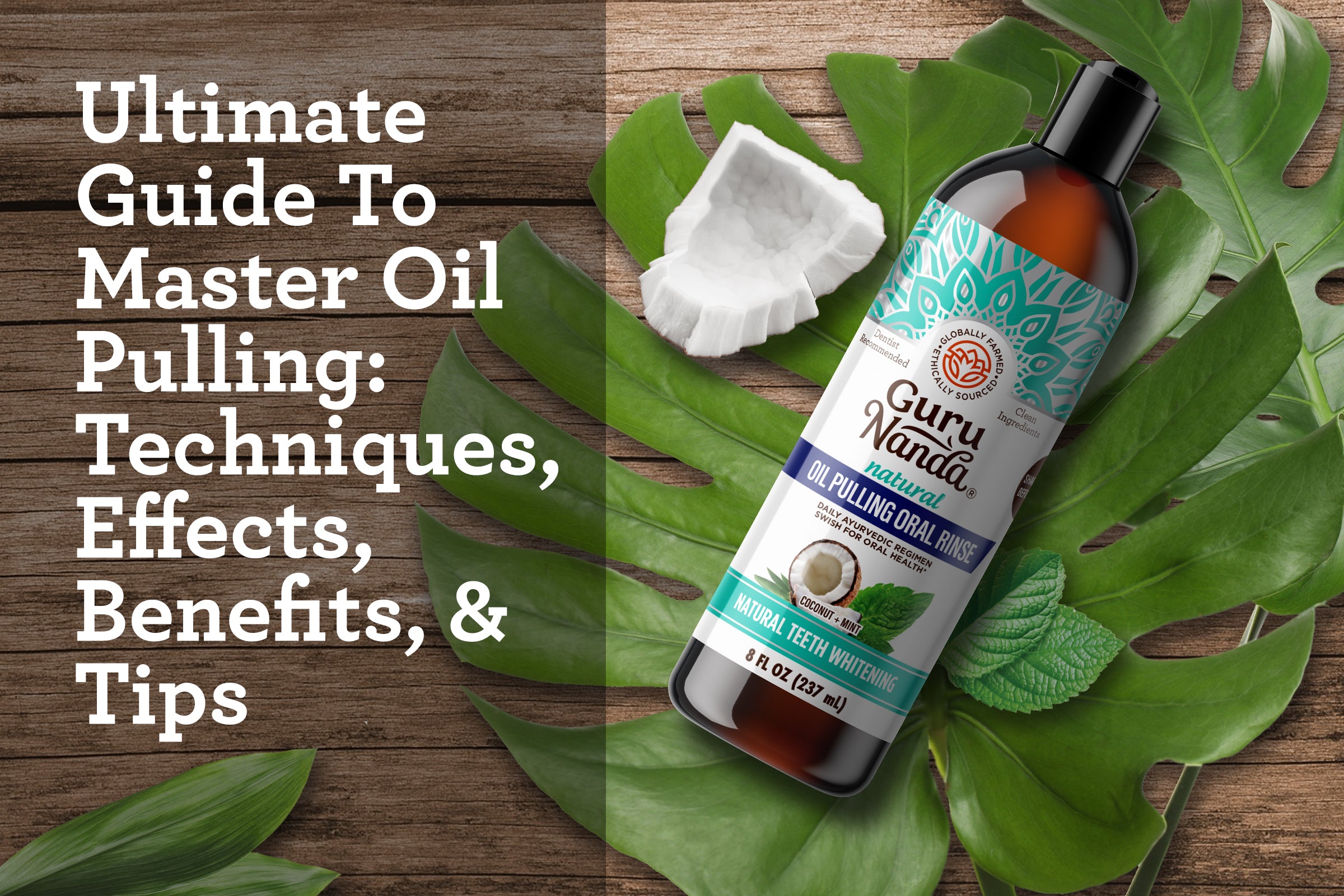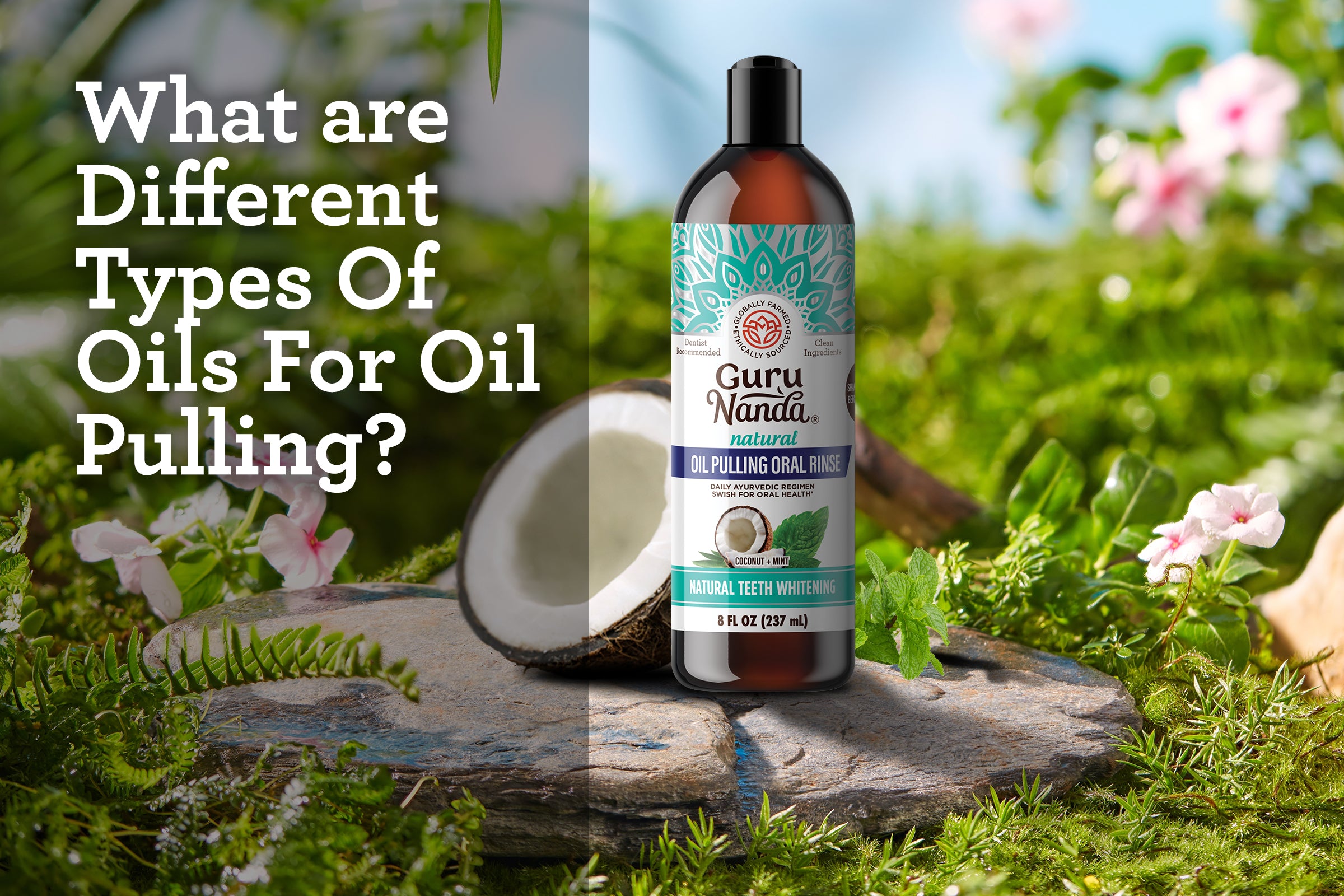Does Coconut Oil Make Teeth Whiter?
Coconut oil is increasingly recognized as a simple yet effective solution for combating plaque, which is one of the main causes of tooth discoloration and yellowing. As natural remedies gain traction among those seeking affordable and effective ways to combat plaque, coconut oil in the form of oil pulling stands out as a hidden gem. Oil pulling is an ancient practice where oil is swished in the mouth for about 10 to 20 minutes to achieve its traditional benefits. The lauric acid in coconut oil has antimicrobial properties that help break down plaque, promoting to a brighter smile. [1]
However, its effectiveness can be influenced by various factors. Regular consumption of staining substances like coffee, tea, and red wine, or habits like smoking, can diminish the whitening effects of coconut oil. Incorporating coconut oil pulling with clinically proven products like GuruNanda’s Oil Pulling Rinse into a consistent oral hygiene routine, including brushing and flossing, and reducing the intake of staining foods and beverages can lead to the best results possible.
How Can Coconut Oil Help Whiten Teeth?
The enamel of teeth is covered by a pellicle film, serving as a base for bacterial attachment and plaque formation, eventually leading to tartar and tooth yellowing. Coconut oil, recognized for its antimicrobial properties, targets specific bacteria causing tooth decay. Its fatty acids help dissolve plaque, preventing its buildup and promoting gum health by clearing bacteria. The action of swishing coconut oil in the mouth and spitting it out removes unwanted substances, thereby reducing bad breath and contributing to whiter teeth. [1][2]
Why Choose Coconut Oil?
Coconut oil, derived from plant extracts, boasts a range of health benefits, spanning dental to skincare, and possesses medicinal qualities recognized in Ayurvedic medicine. It enhances oral health by activating saliva enzymes to reduce salivary bacterial count and environmental pollutants. Its antioxidant properties target and destroy bacterial cell walls, while lauric acid improves the saponification index, reducing plaque adhesion and cleansing the mouth. Furthermore, coconut oil may help combat bad breath (halitosis) and boost metabolism, promoting healing and longevity. As mentioned above, it also protects against and battles gum diseases by removing plaque and bacteria. [1][3][4][5][6]
How To Use Coconut Oil for Teeth Whitening?
Oil Pulling:
Start your day on an empty stomach by swishing a tablespoon of coconut oil in your mouth for 10 minutes before spitting it out. This method, known as oil pulling, is believed to cleanse the mouth by removing bacteria and toxins, offering various benefits of oil pulling such as reduced plaque, gingivitis, and halitosis. It's a safe and easy practice to incorporate into your oral care routine. This can be done using products such as GuruNanda’s Cocomint Pulling Oil that are pre-formulated with various essential oils and vitamins to give all the traditional benefits by regularly practicing it for just 2 to 10 minutes. [1][4]
Brushing with Coconut Oil:
Instead of traditional toothpaste, you may try using liquid coconut oil or solid coconut oil on your toothbrush and brush gently for 2 minutes. This technique allows the oil to spread throughout the mouth without harsh scrubbing. Rinse thoroughly with water afterward. Coconut oil's texture can help remove plaque, and its antimicrobial properties work to minimize bacterial growth post-brushing. [1]
Conclusion
Coconut oil has been highlighted for its potential to enhance the whiteness and brightness of teeth, especially when incorporated into the practice of oil pulling. By adding coconut oil pulling to your comprehensive dental care routine—which should also include brushing, flossing, tongue scraping, and rinsing—you may see improvements in your oral health and tooth color. However, achieving noticeable results requires consistent practice and a diet that avoids substances like sweets and coffee, which can re-stain teeth. And we should also take a note that the individual results may vary depending on your present teeth color and eating and drinking habits. Products designed specifically for oil pulling, such as GuruNanda’s Oil Pulling Rinse, are clinically proven to whiten teeth over time. Consistency and the right product choice are key to achieving a brighter smile, with many users noticing their teeth becoming two shades brighter in about six weeks. Combined with regular brushing and flossing, and reducing the intake of staining foods and beverages, coconut oil pulling can be an effective addition to your dental care regimen.






